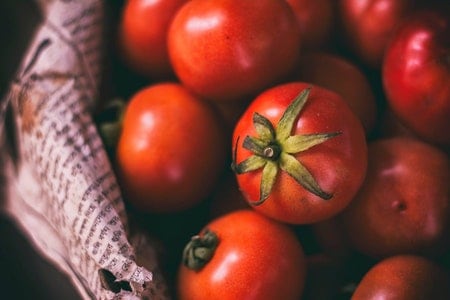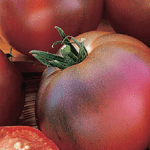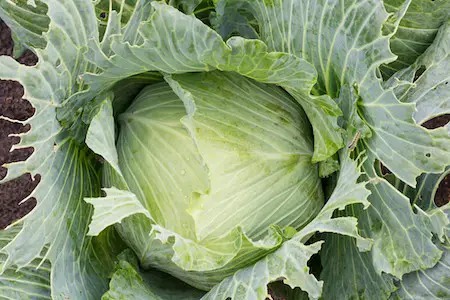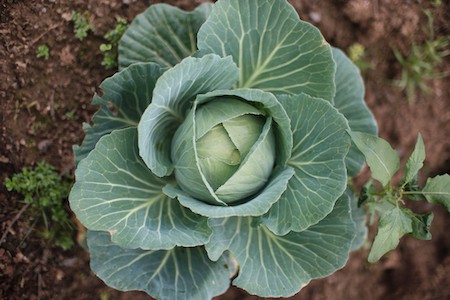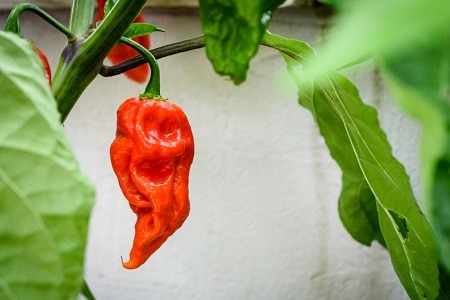The roots of this common tomato variety remain largely a mystery, although it is believed to have been first introduced in 1908. A popular Scottish tomato breed by Mr. Alan Balch in Inverness, Ailsa Craig tomatoes get their name from a Scottish Island, Ailsa Craig, which is a uniquely shaped island rock.
The Ailsa Craig tomato is a semi-green, early ripening variety that produces bright red, medium-sized fruits. Very popular with amateur growers and renowned for its flavour. This species of tomato has been cultivated by UK gardeners for more than a century and is a strong suggestion for us.
Ailsa Craig is a form of tomato cord. When growing outdoors, we will suggest restricting them to no more than 6 trusses based on how much sun you get in your part of the United Kingdom.
A crop of Ailsa Craig tomatoes takes approximately 15 weeks from the seed to the first harvest.
- Tomato Ailsa Craig is an early maturing, semi-greenback variety producing bright red, medium sized fruits. Very popular with amateur growers and famous for its flavour.
It is more common to sow Ailsa Craig tomato seeds in a greenhouse in March/April to plant in April/May even though seeds can be sown as early as late December.
It produces greenback fruit of ideal size and form and is ideal for both outdoor and indoor farming. The weight of the fruit varies from 70 to 90 grams.
Ailsa Craig Tomato History
The Ailsa Craig tomato is a popular and delicious English Heritage variety dating back to 1925. It was initially introduced in 1908, but it gained great popularity among gardeners for its excellent flavour, size and shape of the fruit early on in the season.
This long-time favourite can be grown indoors or outdoors as well with prolific cropping habits which ensures you will always have plenty! The Ailsa Craig weighs around 70 to 90 grams.
The origins are largely unknown but it was first introduced in 1908 when Ailsa Bay on Scotland’s east coast became protected as part of the country’s new National Park system.
Timing:
Because they cannot survive frost of any degree, the timing of outdoor planting and sowing becomes the key to effective tomato development. Where the seeds are sown indoors or under the shade, the goal is to sow the seeds in such a way that they are ready for transplantation within three weeks from the date of the last frost. Tomato seedlings take around seven weeks after they are sown before they are ready to be transplanted.
To put this into perspective, if you last experienced frost in early May, the seeds should be planted at the start of April to make sure you can transplant by the ending of May.
Position:
Tomatoes need to be in a position where they have full access to sunlight. Two or three weeks before planting, till the soil and add as much manure as possible. The optimal soil type used for containers is composed of equal parts potting compost and loam soil which gives the soil some weight.
Sowing:
Plant the seeds 3 mm (1/8 in) deep in small pots with seed starting compost. Water lightly and make sure the seeds stay moist till they germinate. Tomato seeds usually germinate within 5-10 days after planting if stored at an ideal temperature range (The ideal temperature range varies from 21°C to 27°C). Place in a location that absorbs a lot of light and a cooler temperature (varying from 60°F to 70°F) as soon as they emerge.
Transplantation:
When the plants grow their first true leaves, and before they become root attached, they can be transplanted into 20cm (4in) larger containers. Young plants are very tender and vulnerable to frost damage, as well as sunburn. You could cover young plants by putting them in a big plastic milk jug, separated from the bottom, into a miniature greenhouse. Based on the components of your manure, you will need to start fertilising.
If you fertilise, do so very, very sparingly with a weak dilution. Transplants to their final location when they are around 15cm (6in) long. Two or three weeks before that, the plants should be hardened.
Planting:
Right before the tomato plants are transplanted to their final position, at 5cm (2in)away from the position where they are planted, drive a hard stake into the ground. The stake should be driven to a minimum of 30 cm deep into the ground and should stand 120cm (4ft) above ground level. The deeper it’s driven into the dirt, the greater the protection offered. As the plant begins to grow, wrap its stem around the support stake and observe the previous ties to make sure they aren’t cutting into the stem.
Make a hole with a 45 cm (18 in) gap with a similar depth as the pot and water if necessary. Remove the plant from its pot and handle the root ball with the utmost care, avoid any contact with the root ball. Put it in the previously dug hole and fill any gaps around the plant with soil. The soil should be slightly higher than in the pot. Loosely wrap the stem of the plant around the support stake using garden twine – give some leeway for further growth.
Cultivation:
A regular supply of moisture is important, dry weather greatly increases the danger of fruit splitting. Apply a liquid tomato fertiliser (preferably one high in potash) from the moment the first fruits begin to form, then at two or three-week intervals until the end of August. In September, feed the plants with a general fertiliser (one with high nitrogen content) to help the plant maintain its foliage.
Over watering can help to yield greater fruit, but the flavour may be diminished. Besides, fracturing and cracking can result from irregular and unnecessary watering.
Pruning:
Immediately first fruits start to emerge, cut out the side shoots located in the middle of the main stem. Ensure to also remove any yellowing lower leaves as yellow leaves can be a sign of infection.
Harvesting:
Pluck the fruits immediately they mature as this also gives way for more produce. Harvest your produce at the slightest threat of frost and leave them to ripen on the window sill.
Ailsa Craig Tomato Characteristics
Growth Type: Cordon.
F1 or Open-pollination: Open pollination.
Where to Grow: It grows well outdoors, greenhouses are also a viable alternative.
Texture/Taste: Tomato with a juicy texture and great taste whilst retaining its shape.
Use: It is popularly used in salads, burgers, and for general consumption because it cuts well.
Skin Colour: It has smooth red skin
Flesh Colour: The flesh of the Ailsa Craig tomato is red:
Storage: It ripens well on a window sill and can be picked while green.
Size: It is an average-sized tomato.
Cropping Regularity: It produces a strong yield regularly.
Buying Ailsa Craig Seed in the UK
You can buy Ailsa Craig tomato seeds from nearly all online seed vendors, garden centres, DIY shops, and some supermarkets. To ensure your Ailsa Craig seeds are true to form we would recommend that you source them from trustworthy gardening firms.
Ailsa Craig is also commonly distributed as pot-grown tomato plants. With postage in mind, it is the cheapest and fastest way to buy them from the nearest garden centre.
What size are Ailsa Craig tomatoes?
| Average Packet Size | 75mg |
|---|---|
| Hardiness | Half Hardy Annual |
| Colour & Average Weight | Red, 70 to 90 grams |
| How Tall Does it Grow? | 150cm (60in) |
| How should you Space it? | 60cm (24in) |
It’s important to keep your tomato plants tidy, and that includes trimming away old leaves. Too many can create a build-up of disease from the bottom up so it is best to snap them out like sideshoots if they are congested with leaf matter or aged. This will also make picking off ripe produce easier as well!

